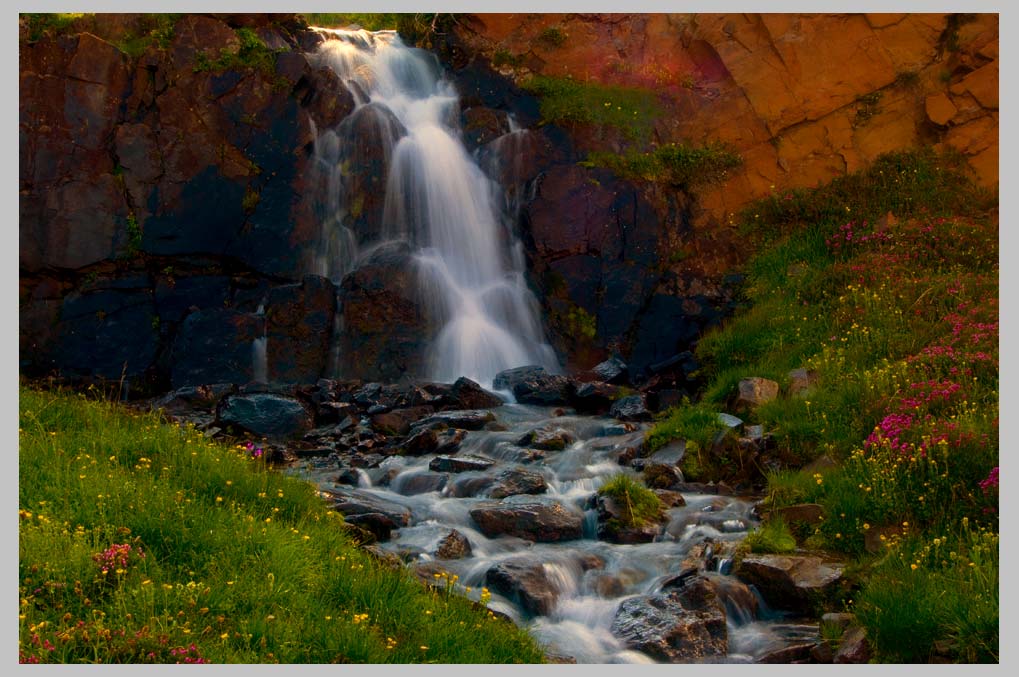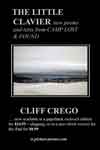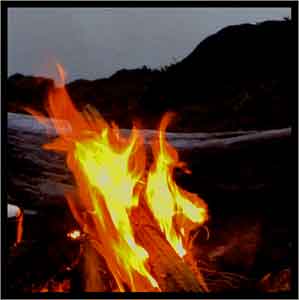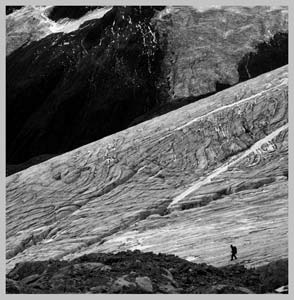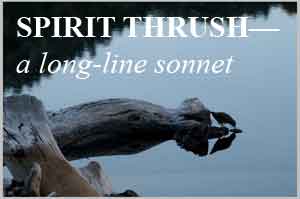LONG-LINE SONNETS are a new variation on an old form: four stanzas of 4 + 4 + 3 + 3 lines, without end-rhymes, and only with a rough step or syllable count--as in a dance--of ± 12 or 14 steps per line or phrase. As always, what is primary for me is the movement of the sound itself, as a kind of music. Very much secondary is how a poem is written down or notated on the page. Indeed, the notation is simply a kind of elementary score, no more and no less, just as if it were intended for flute or voice, or keyboard.
The series is unified firstly from within by what I sense as a similar sonorous sound, with the long-line phrases all being based on the breath just as a good singer might do. In addition, there's much attention given to what I think of as related species of resonance. The latter replaces--happily, in my view--the somewhat rigid and outmoded emphasis on the mechanical patterns of similarity we call 'rhyme.'
Second, for me personally, the series is held together by its mostly European cultural theme. In a word, what interests me here is what I sense as a kind of rough-hewn spiritual excellence:--a kind of miraculous clear mountain quartz of the soul just after its opaque gray-green clay is washed off. And this, regardless of where it manifests, whether it be a magnificent cathedral, a defiant old poet on top of an appallingly hubristic dam in the French-speaking Alps, or simply in the care and skill
with which a mountain farmer builds his piles of well-composted cow shit. Indeed, this is what moves me to compose and work on them in the first place:--a kind of Heimweh or homesickness for a part of me that is much more European than North American. Part of that is my past. After all, I've lived in different European countries, especially the lowlands of Holland, and the highcountry of the Alps and Switzerland, the better part of my adult life. But this is not the Europe of tourist buses and famous attractions known to many speakers of English. It is a far lesser travelled, and yet much more vibrantly alive "old country" which exists in its own, indeed ancient, and to my way of thinking, still relevant time-space.
In this view, real beauty does not grow old.
The beauty and power of a Bach hymn, or of John Dowland, is in this sense timeless. And there is a part of Bach, for example, a depth of feeling and resonance, that I think we miss entirely in North America. The latter must--and I offer this only as a conjecture--have something to do with the beauty of the German language itself, as well as the organic power of the German highland countryside out of which its sound and rhythms emerged. The English spoken in North America is, to my ear at least, still far too young to have developed anything like this kind of deep relationship between sound, meaning, and a love of the living, pulsing land.
| listen a quartet of sonnets, with interpolations of
some of my music |
| download mp3 | c. 9' 11.6 Mb [Windows: r click; Mac: opt + click] |

